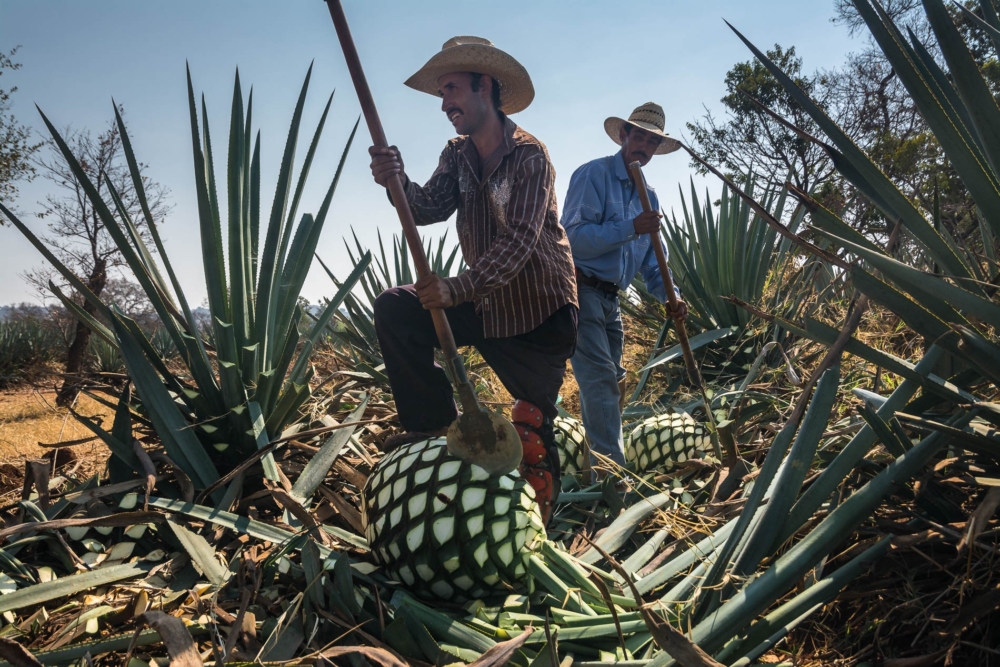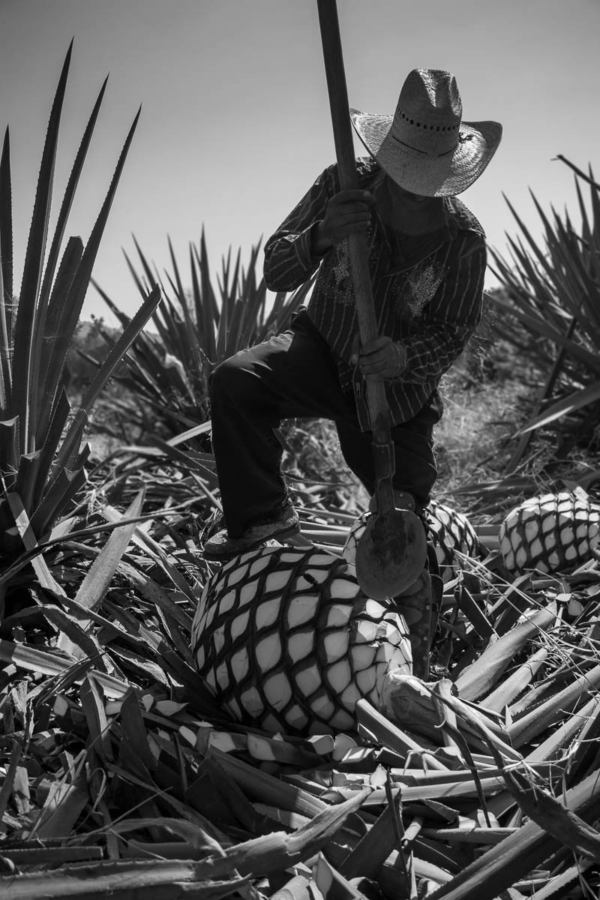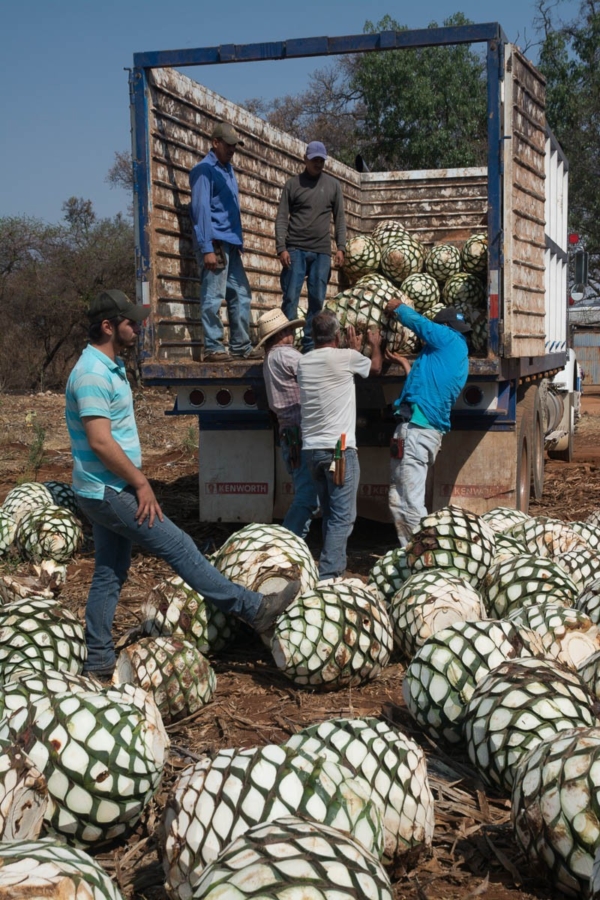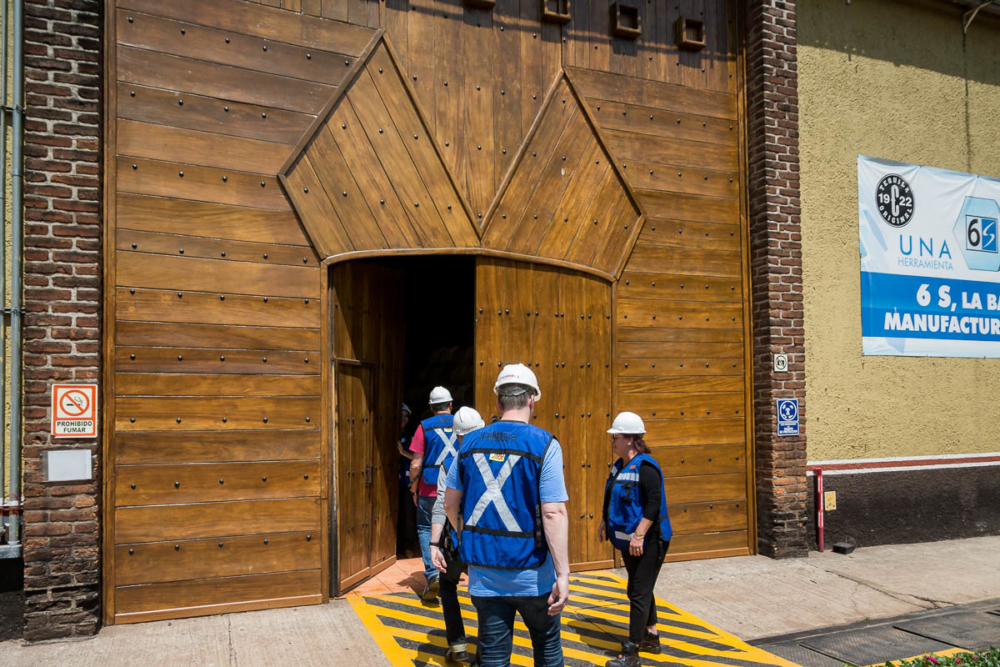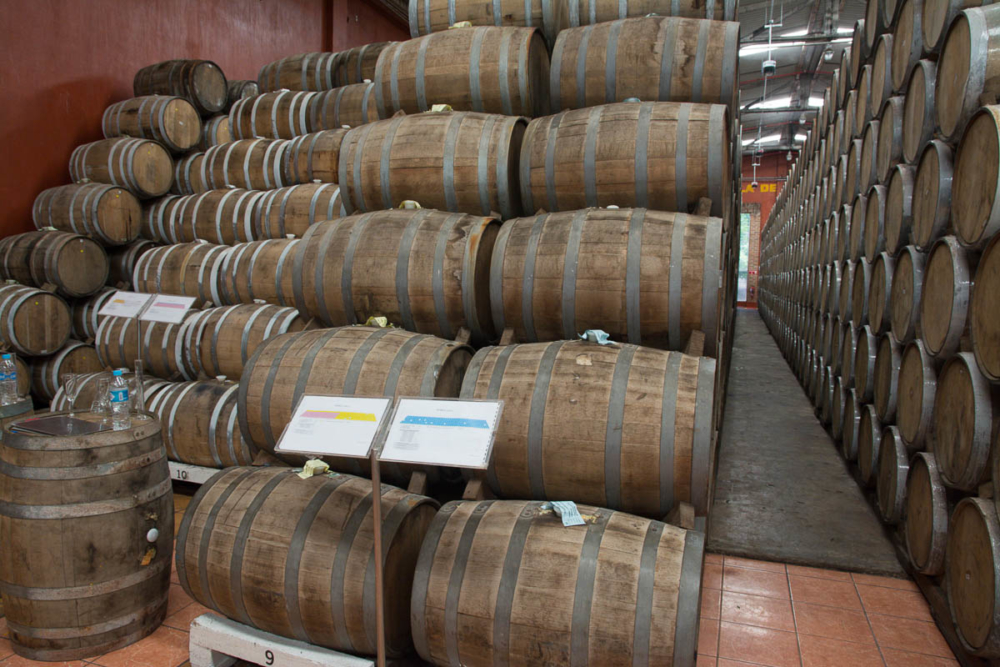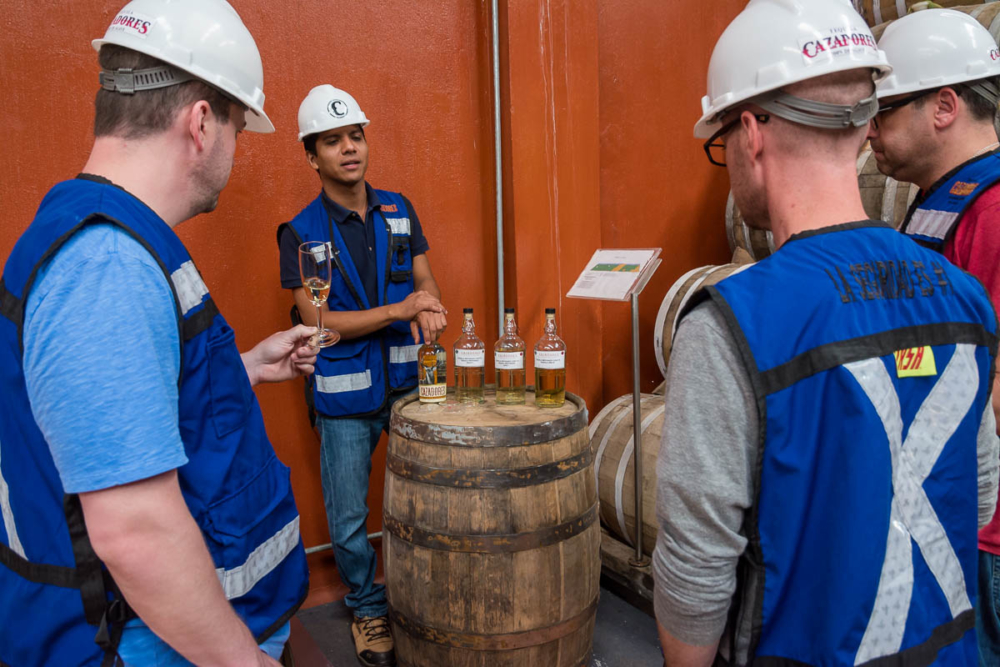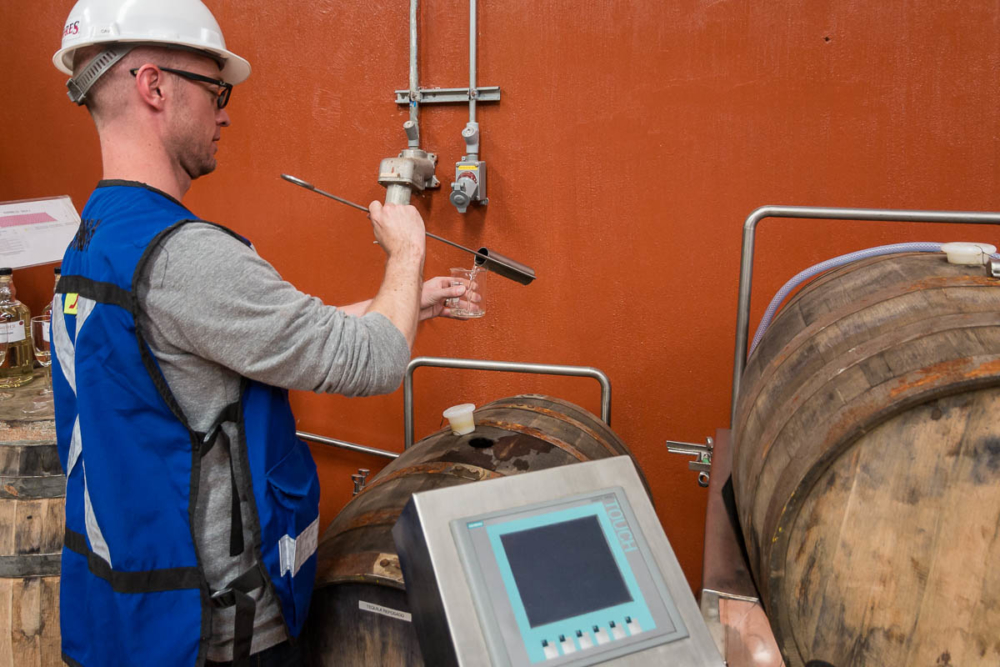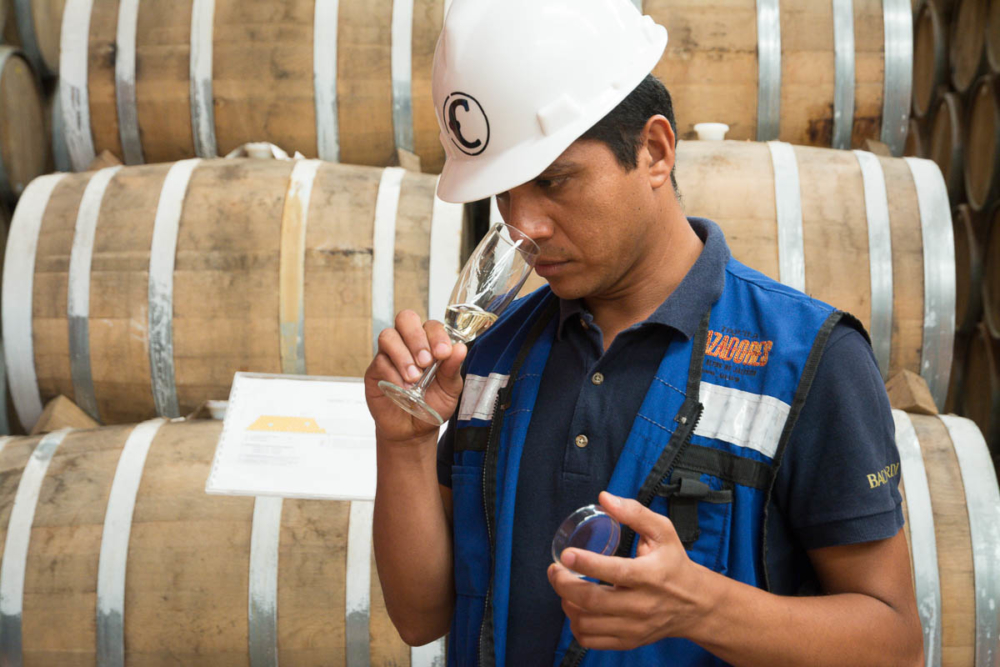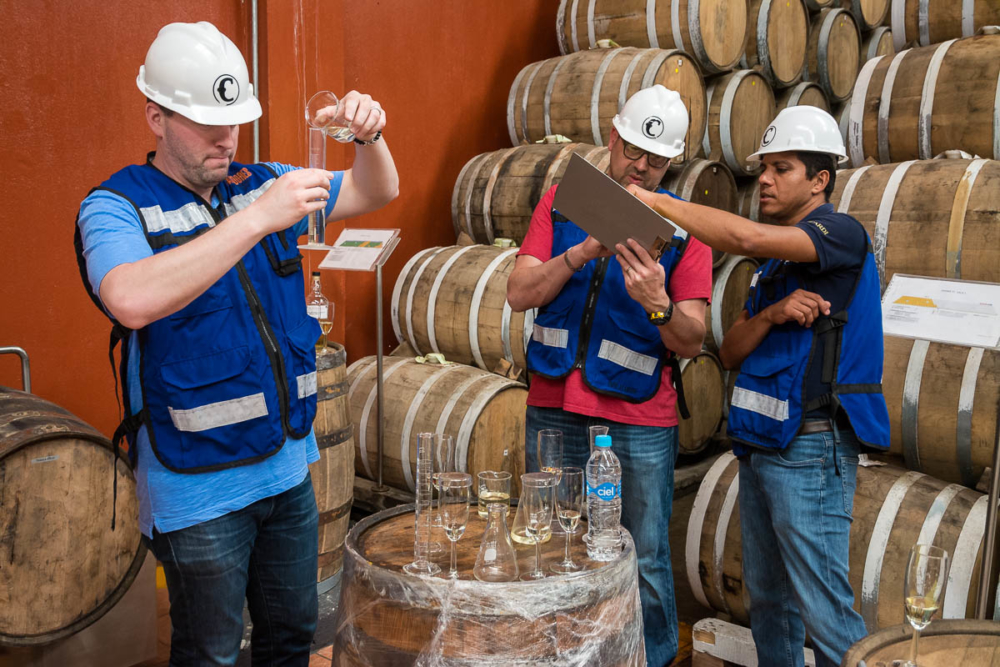At Tequila Cazadores, They Use the Mozart Effect to Give Their Agave Juice Happy, Fermented Lives
24 hours a day, Mozart soothes the agave as it ferments with yeast in dozens of 30,000-liter tanks two stories high. The company says it achieves 98% sustainability at its distillery in Arandas, Jalisco.
VIDEO: Listen to 100,000s of thousands of gallons of tequila fermenting to the sound of Mozart at Tequila Cazadores in Arandas, Mexico.
If you’ve ever lived a tequila lover’s dream and visited a distillery in Mexico, you’ll never forget the unique smell of the beautifully fermenting agave that follows you around — everywhere. It’s always the same, no matter the producer, capturing the essence of the 16th-century spirit: a confusing whiff of something sweet and fruity, earthy and piercing, that’s quite unlike the finished product. You recognize it immediately. But at Tequila Cazadores, in the rolling, rustic highlands of Arandas, Jalisco, you’ll notice one crucial difference about how things operate, and it’s not related to the smell.
It’s the classical music. Mozart, to be precise.
24 hours a day, overhead speakers pump out a quiet stream of Mozart symphonies as bubbling agave juice ferments in dozens of 8,000-gallon tanks, which reach two stories high. Four times the height of most humans. But what to do when the inevitable fights break out because one employee can’t stand Mozart, she’s in love with Liszt?
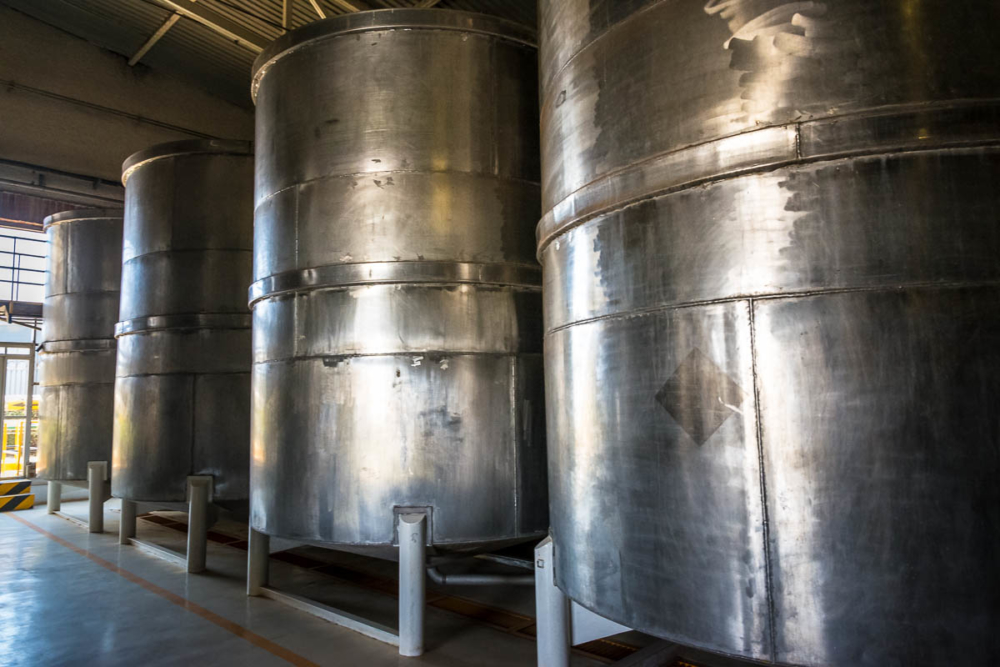
This classical music, though, isn’t for human consumption — it’s meant to help the tequila and, specifically, the yeast perform under ideal conditions during its seven- to nine-day fermentation period.
“Since the yeast is alive, our master distiller believes that the Mozart effect helps the fermentation process,” says Tania Oseguera, a master tequilier and our guide at the forward-thinking distillery.
The “Mozart effect” is the idea that listening to Mozart can make you smarter. Sure, the latest research shows that the specifics of earlier studies have been largely disregarded, but in general listening to music has been able to temporarily improve certain responses in the human brain.
Well, gee, thanks. We already knew that Vicente Fernández is the perfect accompaniment for a late-night shot of reposado. But what about our brainless key ingredient, the microscopic yeast fungus, which is responsible for converting the agave’s sugars into alcohol? Can the Mozart Effect do its thing on yeast?
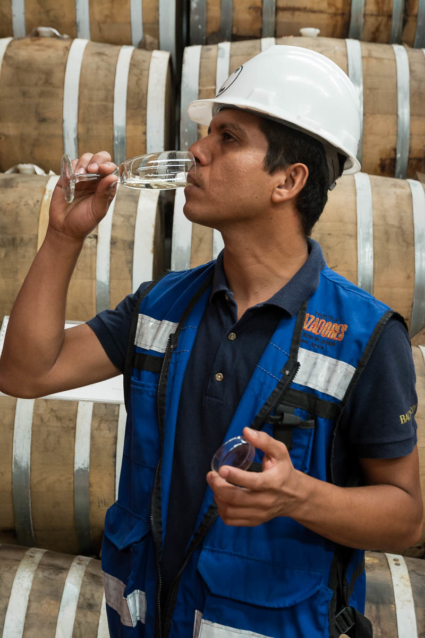
It’s a concept embraced at the distillery by its master blender, Jesús Susunaga, who’s been at the helm of Tequila Cazadores for the last year. As the company’s master distiller, his name is the one which appears next to the founder’s in company literature or on tequila aficionado websites. New to Cazadores, he’s been with its parent company, Bacardi, for the past 12 years. His new position is not an easy shoe to fill. Cazadores’ previous distiller, Jesus Reza, had been with Bacardi for 33 years.
Now it’s Susunaga’s job to protect the integrity of the brand by checking the distillation process at each step, ensuring the same quality and taste is maintained among the company’s seven types of tequila, barrel after barrel, year after year.
It’s a delicate balance to achieve when you need to remain faithful to your market, as well as to the traditions of tequila, while still trying to push the envelope. Some ways that companies are trying to do just that is the recent addition in 2006 of the “extra añejo” tequilas. These tequilas are aged extra-long, at least three years. Since introducing their own extra añejo in 2011, Cazadores has been one of the new classification’s leading proponents, thanks in part to the work of Tania Oseguera and now Jesús Susunaga. (See table below for definitions of how 100% agave tequilas are classified).
Along the way, they’ve brought some new ideas to the table, such as using the Mozart effect during fermentation.
“The Mozart effect relaxes the yeast,” says Manny Hinojosa, the company’s brand ambassador, and all-around dynamite personality. “The yeast is a living organism that is going to grow, reproduce and die during the fermentation process. The Mozart effect is going to help it have a slow fermentation process and the key here is that it’s going to develop more flavors, more alcohols. Those are going to give a beautiful liquid, unique to Tequila Cazadores.”
No matter what your opinion is about the research, Cazadores’ attention to the finer details is the reason why it’s one of Mexico’s most-consumed Tequilas, during a period which has seen a steady 2.5% growth in terms of volume. These days, everyone’s drinking tequila, and not just in Mexico.
With the origin of its 1922 recipe, Tequila Cazadores has a reputation to defend as the premiere tequila to come out of Jalisco’s highlands, an area two hours’ drive northeast of Guadalajara. The hilly countryside in Arandas, Jalisco, is 1,500 feet higher than the more central lowlands, where the eponymous town of Tequila sits. Which means the agave plants in the highlands get more sunshine every day and produce more sugar. For the distiller, this means more sugar and thus more precious alcohol.
For the consumer, this means… more alcohol. Everybody wins.
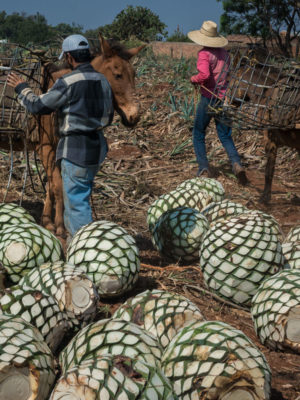
On the drive up, you can tell that the red clay earth around Arandas is much oranger than it was in the lower elevations of Jalisco. The soil’s composition also helps give the highlands tequilas their unique flavor palette. The yeast that Tequila Cazadores uses is, unlike some distilleries, not a wild yeast, but comes from a controlled source in England. Tania says it’s another way of keeping the product uniform and its customers happy.
Tequila drinkers have been known to be a picky lot.
The refrigerated yeast is periodically brought out and tested for mutations. Should any be found, it’s thrown out and more is brought in from England. Regardless, they replace their current stock every five to seven years, as eventually new yeast strains just happen.
As a part of the company recipe, the master yeast samples are obviously kept behind locked doors, which guard an on-site, government-certified lab. It’s become Mexico’s go-to laboratory for checking the purity of tequila and performing other chemical tests. When other companies — there are hundreds of businesses producing private label tequilas who don’t own their own distillation equipment — need their products tested, they can come to this lab to get certified.

Mozart isn’t the only leading-edge work being done at Tequila Cazadores. 98% of the distillery is completely sustainable Sommer Walker tells me, Bacardi USA’s national accounts manager, who was on the day’s tour through the high-tech facilities. Solar panels provide electricity, and the fibrous agave piñas are used in a biomass cooker once the juice is mashed out of them. Overall, 65% of the power used at Cazadores comes from the fibers in the spent agave plants. Ashes are then used in composting.
Mules are still used to transport the piñas in the fields by its independent, third-party contractors. (Mechanical mashers now take the place of donkeys, which until the previous century had been used in all parts to squeeze the piñas dry.) New agaves, too, can be propagated from old ones by planting cuttings from recently jimar‘d piñas.
The jimadores who do all the backbreaking work in the tequila fields of Jalisco come from a long, prestigious line: their fathers were jimadores and their grandfathers before them. It’s not something you just sign up for. The labor is grueling under the morning sun and must be done between 7 a.m. and noon, before the heat of the day would, in the hottest months, make such arduous work intolerable.
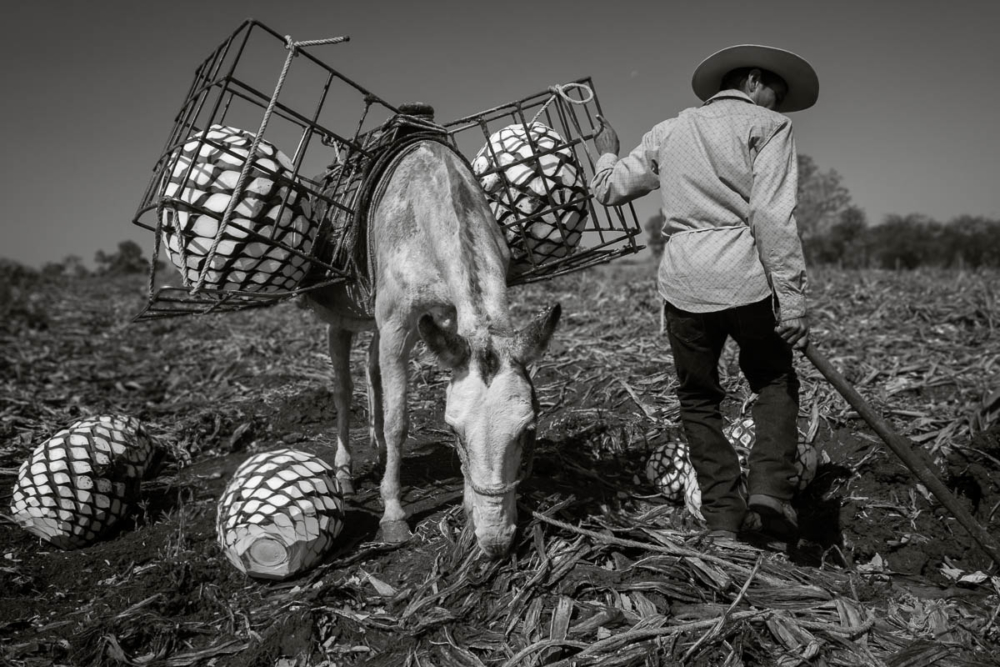
At the hottest part of the year in May the temperatures in this part of Jalisco rise to the upper 90s or lower 100s, just before the June monsoon season starts. Then the average temperatures cool down as the sometimes nightly rains keep the summer days in the 80s. Plenty hot when you’re trying to lift 100-pound agave piñas into the back of a waiting truck, a task which comfortably requires three people.
But the high elevation where the agave is grown means that the temperatures in this part of the country are never at an extreme. This is part of the reason why most of Mexico’s population centers are located at elevations above a mile high. Aside from obvious coastal beach populations, most of Mexico’s cities sit between 5,000 and 7,500 feet.
The Mexican government sets very high standards for producing one of its most important exports and cultural touchstones. Tequila must be made from blue agave, which matures around eight or nine years and can grow up to 150 pounds. It can only be produced in the state of Jalisco or in parts of four other approved states: nearby Guanajuato, Nayarit and Michoacán, plus Tamaulipas, on the north coast of the Gulf of Mexico.
There are two legal classifications of tequila. First: pure, 100% agave tequila; and second, what’s simply called “tequila” for anything made from between 51% to 99% tequila. All the tequilas that Cazadores makes are 100% pure agave, meaning the only sugars (which get converted into alcohol, remember) in the agave juice are from actual agave — not from an additive such as corn. Which is, according to everyone you talk to, not what tequila is supposed to taste like.
These tequilas made from 51% agave are informally called tequila mixtos, but it’s a term that doesn’t legally exist. “These are words that people started using informally precisely because there is no legal word to name these 51% blue agave tequilas,” says Tania Oseguera, our guide at today’s visit to Cazadores and its brand ambassador.
Sometimes, it would seem, the government is more stringent with regulating the tequila industry than it is with protecting its own people. On the rented van ride from Guadalajara to Arandas, Robert Sarstedt asks Oseguera if she drinks the tap water here in Mexico.
“No! Our government doesn’t care enough about us to make sure we have good water to drink.” Still, living in the rustic highlands of Arandas sounds better than the cold winters of Flint, Michigan.
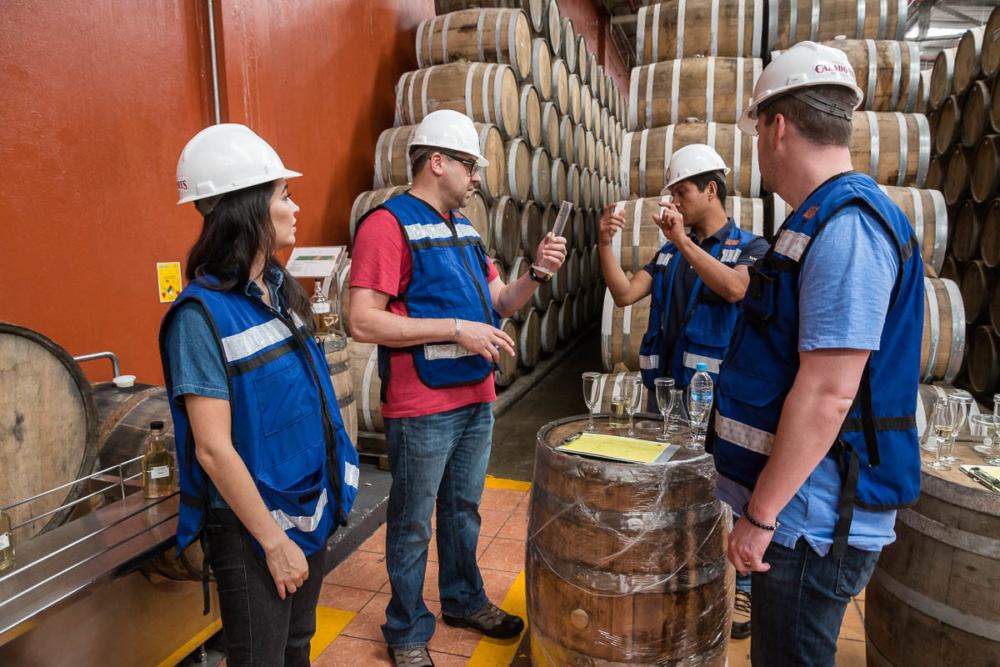
Sarstedt, the corporate executive chef of the House of Blues, was traveling to Arandas, with other members of the music and restaurant group, to create a 25th-anniversary tequila blend with master distiller Jesús Susunaga. Sarstedt and the national food and beverage director, Evan Traub, had settled on blending a reposado and standing among the five to 7,000-odd barrels of tequila now stacked in the aging room everyone was wondering which barrel to start with.
To be classified as a reposado blend, it can only be mixed with another reposado or tequila of higher classification. How long are 100% tequilas aged, what are the different kinds of tequila and how are they classified?
How Are 100% Agave Tequilas Classified?
- Tequila blanco, also called plata (silver), platinum or white. This tequila is clear and usually not aged at all.
- Tequila reposado (rested or aged), which ages between two and 11 months in wooden barrels, giving the tequila its natural color.
- Tequila añejo (meaning extra aged or vintage), must be aged at least one year.
- Tequila extra añejo (ultra aged or extra vintage), a new classification since 2006, must be aged at least three years.
So a good ratio for a reposado blend begins by using a majority of basic reposado tequila. Combining everything into a simple measuring cylinder, you can add other tequilas, either another reposado or an añejo or extra añejo, until the right balance is achieved. The blending process itself isn’t rocket science, but tasting it — and knowing in which direction to go by adding or subtracting which tequila — certainly is. (Only 8 people are recognized as master tequiliers, the highest level of knowledge recognized by the Mexican Academy of Tequila.) It’s a tricky line to cross, possibly creating something embarrassing that no one wants to drink and or associate their brand with.
But that’s why Jesús Susunaga is here in the Cazadores aging room with the House of Blues team. He brings his near-decade of experience as the distillery’s master blender to the table — which at the moment is the top of an upended oak barrel where there are several empty glasses and a bottle of water, for neutralizing the taste buds before each of the experimental blends are tried. The first blend is created and Jesús is ready to be the first to give it a test.
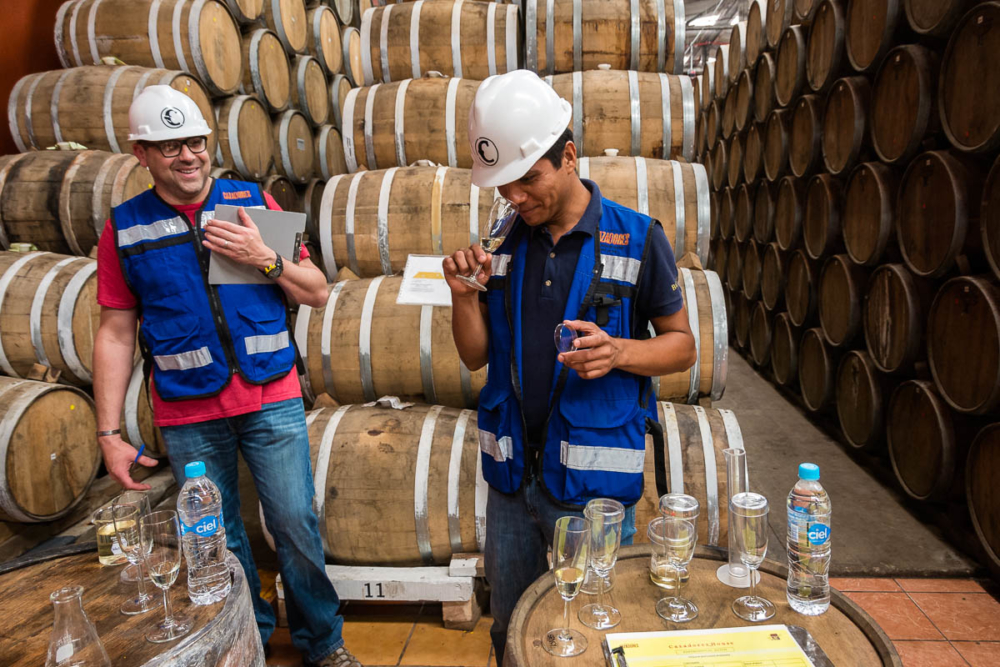
A whiff first before tasting and Jesús tries to stifle a funny reaction, but his face is telling. He can already tell this one will have to go back to the drawing board. Too much añejo. It’s much too spicy together with the “spicy” reposado blend that Jesús has been experimenting with. What if it had a little of the other “fruity” blend he also has come up with?
After a third try and a final for quality control, the House of Blues has its 25th-anniversary blend, a perfect, bold mixture that pushes the boundaries of a great, sipping reposado. Jesús will oversee the blending of two barrels worth, which will be sold this year at their nation-wide establishments.
More photos of the Tequila Cazadores distillery in Arandas, Jalisco, continued below

